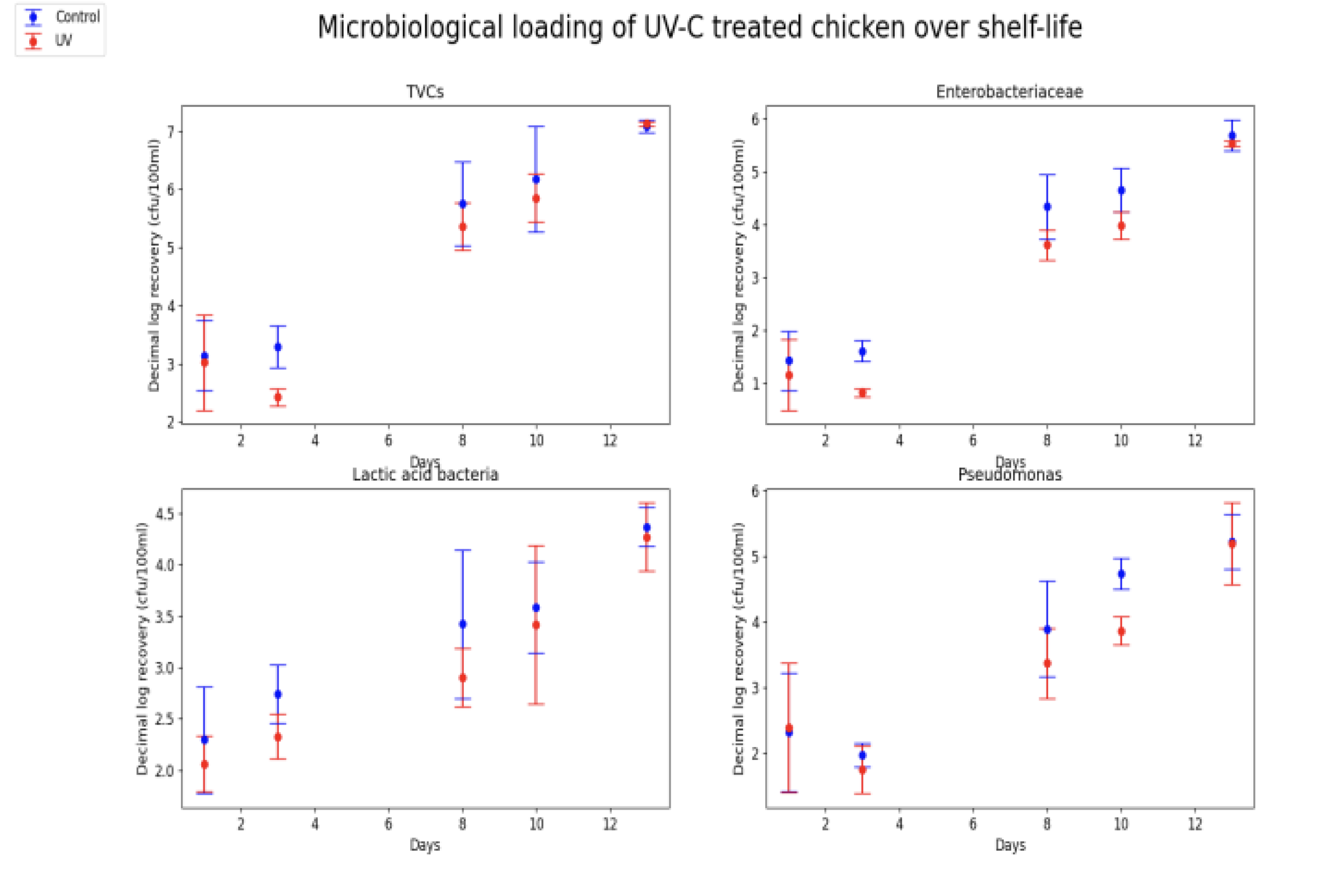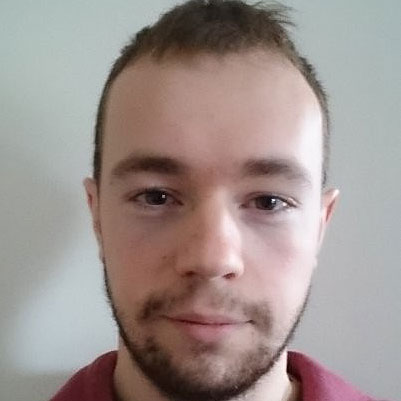Skinless chicken breasts were vacuum packed and shrink wrapped. Half of the breasts were treated with 80 mJ/cm2dose of UV-C iradiation in-pack and the other half kept as control smaples. Both control and UV treated breasts were analysed for Enterobacteriaceae, TVC, Lactic acid bacteria and Pseudomonasat various time points throughout a 13 day storage.
Purpose
UV-C was thought to prolong shelf life of chicken breasts by reducing micro growth over the storage duration.
Main conclusions
Although the average log recovery of mciroorgans is was slightly reduced for UV treated samples at nearly all time points, overall there was no signifcant difference between UV and control samples.
Log recovery of all organsims at day 13 very similar between control and UV treated samples, largest seen in between days 3 and 10. Significantly large gaps seen for TVC and Enteros at day 3 and Pseudomonas at day 10.
Methods
Skinless chicken breasts were purchased from a local UK wholesaler. The breasts were vacuum packed and shrink wrapped by exposing the breasts to an 85°C water bath for 2 sin UV-C transmisable packaging (around 65% transmission).
Half of the packaged breasts were then passed through a UV-C tunnel delivering a UV-C dose of 80 mJ/cm2 within the packaging and the other half kept as controls.
The level of microorganims on the treated breasts were compared to that of the control samples at days 1, 3, 8, 10 and 13 during storage (3 replicates per day for control and UV treated samples).
What was investigated/ examined/ measured
The growth rate of Enterobacteriaceae, TVC, Lactic acid bacteria and Pseudomonasover 13 days in UV treated breasts compared to controls.
Parameter 1 Rate of change in microbiological loading of UV-C treated chicken over shelf life



